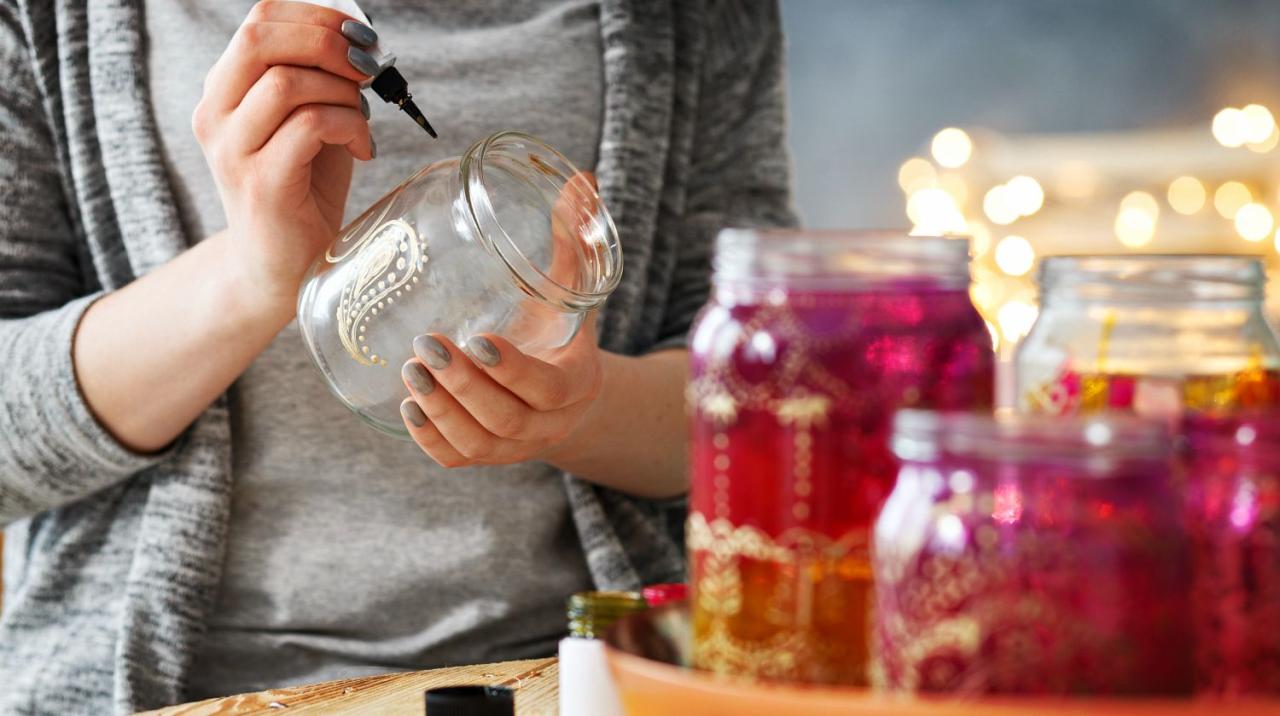DIY projects for adults have become increasingly popular, offering a fulfilling way to engage in creative endeavors and learn new skills. From home improvement to crafting and gardening, the possibilities are endless, allowing individuals to personalize their surroundings and express their unique talents.
The appeal of DIY projects lies in the satisfaction of creating something tangible with your own hands. It fosters a sense of accomplishment, promotes problem-solving skills, and provides a platform for self-expression. Whether you’re a seasoned DIYer or a curious beginner, there’s a project out there that can ignite your passion and inspire you to embrace your inner maker.
DIY Home Improvement Projects

Home improvement projects can be a rewarding way to enhance the value and aesthetics of your home. These projects can range from simple tasks like painting a room to more complex renovations like adding a new deck.
Common DIY Home Improvement Projects
Common DIY home improvement projects offer a variety of benefits, including increased home value, improved functionality, and personalized aesthetics. These projects can also be a great way to save money compared to hiring a professional. However, DIY projects can also present challenges, such as requiring specialized skills, tools, and time.
- Painting: A fresh coat of paint can transform the look and feel of a room. It is a relatively simple project that can be done by most homeowners. However, proper preparation is essential for a successful paint job.
- Installing New Light Fixtures: Updating light fixtures can enhance the ambiance and functionality of a space. This project typically involves basic electrical work and requires caution.
- Replacing Cabinet Hardware: New cabinet hardware can give your kitchen or bathroom a modern and updated look. This project is relatively simple and can be done with basic tools.
- Building a Deck: Adding a deck to your home can create an outdoor living space for entertaining and relaxation. This project requires carpentry skills and can be more challenging than other DIY projects.
Step-by-Step Instructions for Painting a Room
Painting a room is a classic DIY project that can be completed by most homeowners with basic tools and supplies. Here is a step-by-step guide to help you get started:
Step 1: Prepare the Room
- Remove furniture and belongings: Clear the room of all furniture and belongings. This will give you ample space to work and prevent accidental damage.
- Cover the floor and trim: Protect your floors and trim with drop cloths or painter’s plastic. Use painter’s tape to secure the coverings and protect areas you don’t want to paint.
- Patch any holes or cracks: Use spackle or patching compound to fill any holes or cracks in the walls. Allow the patching compound to dry completely before sanding it smooth.
- Clean the walls: Wash the walls with a mild detergent and water to remove dirt and grime. Allow the walls to dry completely before painting.
Step 2: Prime the Walls
- Apply primer: Prime the walls with a high-quality primer. This will help the paint adhere better and create a smooth finish.
- Allow primer to dry: Follow the manufacturer’s instructions for drying time.
Step 3: Paint the Walls
- Choose the right paint: Select a paint that is appropriate for the type of surface you are painting. For interior walls, a latex paint is generally a good choice.
- Use a paint roller: Use a paint roller to apply the paint evenly to the walls. Start at the top and work your way down, using long, smooth strokes.
- Paint the trim: Use a paintbrush to paint the trim around the room. Be careful not to get paint on the walls.
- Allow paint to dry: Follow the manufacturer’s instructions for drying time.
Step 4: Clean Up
- Remove painter’s tape: Once the paint is dry, carefully remove the painter’s tape.
- Clean your tools: Wash your paintbrushes, rollers, and other tools with soap and water.
- Replace furniture and belongings: Return your furniture and belongings to the room.
DIY Skills and Tools: Diy Projects For Adults
DIY projects can be a fulfilling way to enhance your home, save money, and learn new skills. Whether you’re a seasoned DIYer or just starting, having the right skills and tools is essential for successful and safe projects.
Essential DIY Skills, Diy projects for adults
Essential DIY skills provide a foundation for tackling various projects. These skills are versatile and can be applied to many different tasks.
- Measuring and Cutting: Accurately measuring and cutting materials is crucial for precise results. Understanding different measuring tools like rulers, tape measures, and levels is essential. Mastering cutting techniques with tools like saws, shears, and knives ensures clean and accurate cuts.
- Basic Carpentry: Basic carpentry skills involve working with wood and other materials. This includes tasks like drilling, sanding, and using fasteners like nails and screws. Understanding how to create joints, build simple structures, and finish wood surfaces is beneficial.
- Painting and Staining: Painting and staining are common DIY tasks. Understanding the different types of paints and stains, proper application techniques, and surface preparation is important for achieving professional results.
- Plumbing: Basic plumbing skills involve understanding how pipes and fixtures work. This includes tasks like fixing leaks, replacing faucets, and installing simple plumbing fixtures.
- Electrical: Basic electrical skills involve understanding how electrical circuits work. This includes tasks like replacing light fixtures, installing outlets, and troubleshooting simple electrical problems.
Basic Safety Precautions
Safety is paramount when working on DIY projects. Following these precautions helps prevent accidents and injuries.
- Wear Protective Gear: Always wear appropriate safety gear, including safety glasses, gloves, and a dust mask, to protect your eyes, hands, and respiratory system.
- Use Tools Properly: Familiarize yourself with the proper use of tools and follow the manufacturer’s instructions.
- Be Aware of Surroundings: Maintain awareness of your surroundings to prevent tripping or falling, especially when working on ladders or stairs.
- Disconnect Power: Always disconnect power to electrical circuits before working on them.
- Use Proper Ventilation: Ensure adequate ventilation when working with paints, stains, or other chemicals.
Recommended DIY Tools for Beginners
A basic set of tools can handle many DIY projects. Here’s a list of essential tools for beginners, along with their uses and maintenance tips.
- Hammer: A hammer is used for driving nails and other fasteners. Choose a hammer with a comfortable grip and a weight appropriate for your needs. Regularly inspect the hammerhead for cracks or damage.
- Screwdriver Set: A screwdriver set includes various sizes and types of screwdrivers for different screw heads. Choose a set with both Phillips and flathead screwdrivers. Keep the screwdrivers clean and lubricated to prevent rust and corrosion.
- Tape Measure: A tape measure is used for measuring distances and lengths. Choose a tape measure with a clear and accurate reading. Keep the tape measure clean and free from dirt and debris.
- Level: A level is used to ensure surfaces are horizontal or vertical. Choose a level with a clear bubble and a sturdy construction. Store the level in a safe place to prevent damage.
- Pliers: Pliers are used for gripping and manipulating objects. Choose a set of pliers that includes needle-nose pliers, slip-joint pliers, and locking pliers. Keep the pliers clean and lubricated to prevent rust and corrosion.
- Utility Knife: A utility knife is used for cutting various materials, including cardboard, paper, and plastic. Choose a utility knife with a sharp blade and a comfortable grip. Always use a sharp blade for clean cuts and safety.
Wrap-Up
Embarking on DIY projects is a journey of discovery, filled with unexpected challenges and rewarding triumphs. As you explore different types of projects, you’ll find yourself expanding your knowledge, honing your skills, and gaining a deeper appreciation for the process of creation. From simple home repairs to intricate crafts, DIY projects offer a unique opportunity to connect with your creativity, enhance your surroundings, and make a meaningful impact on your life.
DIY projects for adults are a fantastic way to unleash your creativity and add a personal touch to your home. If you’re looking for a fun and spooky project for the upcoming Halloween season, check out these awesome halloween diy crafts.
From spooky decorations to festive costumes, there’s something for everyone to enjoy. And don’t forget, these DIY projects are a great way to bond with friends and family while creating lasting memories.




